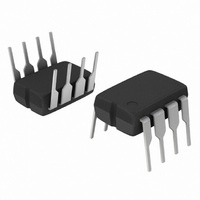NCP1203P60G ON Semiconductor, NCP1203P60G Datasheet - Page 8

NCP1203P60G
Manufacturer Part Number
NCP1203P60G
Description
IC CTRLR PWM CM UVLO HV 8DIP
Manufacturer
ON Semiconductor
Datasheet
1.NCP1203P100G.pdf
(15 pages)
Specifications of NCP1203P60G
Output Isolation
Isolated
Frequency Range
57 ~ 73kHz
Voltage - Input
8.4 ~ 16 V
Voltage - Output
500V
Operating Temperature
-40°C ~ 150°C
Package / Case
8-DIP (0.300", 7.62mm)
Number Of Outputs
1
Duty Cycle (max)
80 % (Typ)
Output Current
250 mA
Mounting Style
Through Hole
Switching Frequency
65 KHz (Typ)
Operating Supply Voltage
16 V
Maximum Operating Temperature
125 C
Fall Time
28 ns
Minimum Operating Temperature
- 40 C
Rise Time
67 ns
Synchronous Pin
No
Topology
Flyback
Lead Free Status / RoHS Status
Lead free / RoHS Compliant
Other names
NCP1203P60GOS
Available stocks
Company
Part Number
Manufacturer
Quantity
Price
Company:
Part Number:
NCP1203P60G
Manufacturer:
ON Semiconductor
Quantity:
8 500
Part Number:
NCP1203P60G
Manufacturer:
ON/安森美
Quantity:
20 000
Current- -Mode Operation
well- -known current mode control architecture which
provides superior input audio- -susceptibility compared to
traditional voltage- -mode controllers. Primary current
pulse- -by- -pulse checking together with a fast over current
comparator offers greater security in the event of a difficult
fault condition, e.g. a saturating transformer.
Adjustable Skip Cycle Level
By offering the ability to tailor the level at which the skip
cycle takes place, the designer can make sure that the skip
operation only occurs at low peak current. This point
guarantees a noise- -free operation with cheap transformers.
Skip cycle offers a proven mean to reduce the standby power
in no or light loads situations.
Wide Switching- -Frequency Offer
100 kHz. Depending on the application, the designer can
pick up the right device to help reducing magnetics or
improve the EMI signature before reaching the 150 kHz
starting point.
Overcurrent Protection (OCP)
the controller stops switching and reduces its consumption.
It stays in this mode until Vcc reaches 4.9 V typical, where
the startup source is reactivated and a new startup sequence
is attempted. The power supply is thus operated in burst
mode and avoids any lethal thermal runaway. When the
default goes way, the power supply automatically resumes
operation.
Wide Duty- -Cycle Operation
excursion. The NCP1203 can go up to 80% typically.
Low Standby Power
load, they begin to be less efficient when the output power
demand diminishes. By skipping un- -needed switching
cycles, the NCP1203 drastically reduces the power wasted
during light load conditions. In no- -load conditions, the
NCP1203 allows the total standby power to easily reach next
International Energy Agency (IEA) recommendations.
No Acoustic Noise while Operating
NCP1203 waits until the peak current demand falls below a
user- -adjustable 1/3
cycle skipping can take place without having a singing
As the UC384X series, the NCP1203 features a
Four different options are available: 40 kHz - - 65 kHz –
When the auxiliary winding collapses below UVLOlow,
Wide mains operation requires a large duty- -cycle
If SMPS naturally exhibit a good efficiency at nominal
Instead of skipping cycles at high peak currents, the
rd
of the maximum limit. As a result,
http://onsemi.com
8
transformer You can thus select cheap magnetic
components free of noise problems.
External MOSFET Connection
can select avalanche proof devices which, in certain cases
(e.g. low output powers), let you work without an active
clamping network. Also, by controlling the MOSFET gate
signal flow, you have an option to slow down the device
commutation,
ElectroMagnetic Interference (EMI).
SPICE Model
simulations is available but also an averaged version to help
you closing the loop. Ready- -to- -use templates can be
downloaded in OrCAD’s Pspice and INTUSOFT’s from ON
Semiconductor web site, NCP1203 related section.
Overload Operation
controlled (e.g. wall adapters delivering raw DC level), it is
interesting to implement a true short- -circuit protection. A
short- -circuit actually forces the output voltage to be at a low
level, preventing a bias current to circulate in the
optocoupler LED. As a result, the auxiliary voltage also
decreases because it also operates in Flyback and thus
duplicates the output voltage, providing the leakage
inductance between windings is kept low. To account for this
situation and properly protect the power supply, NCP1203
hosts a dedicated overload detection circuitry. Once
activated, this circuitry imposes to deliver pulses in a burst
manner with a low duty- -cycle. The system auto- -recovers
when the fault condition disappears.
maximum until the output voltage reaches its target and the
feedback loop takes over. The auxiliary voltage takes place
after a few switching cycles and self- -supplies the IC. In
presence of a short circuit on the output, the auxiliary
voltage will go down until it crosses the undervoltage
lockout level of typically 7.8 V. When this happens,
NCP1203 immediately stops the switching pulses and
unbias all unnecessary logical blocks. The overall
consumption drops, while keeping the gate grounded, and
the V
4.8 V, the startup source turns- -on again and a new startup
sequence occurs, bringing V
to restart. If the default has gone, then the power supply
normally restarts. If not, a new protective burst is initiated,
shielding the SMPS from any runaway. Figure 15, on the
following page, portrays the typical operating signals in
short circuit.
By leaving the external MOSFET external to the IC, you
A dedicated model to run transient cycle- -by- -cycle
In applications where the output current is purposely not
During the startup phase, the peak current is pushed to the
CC
slowly falls down. As soon as V
therefore
CC
reducing
toward 12.8 V as an attempt
CC
the
reaches typically
amount
of











